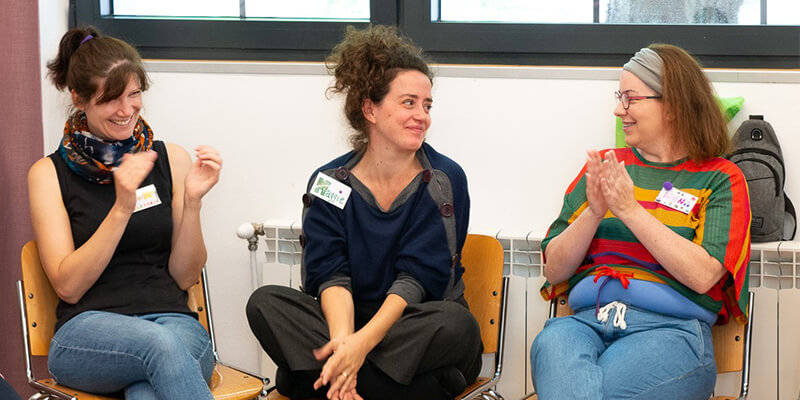The first ClowNexus Artistic Laboratories will take place in October!
Artists from six countries will come together for one week in Finland to explore co-creation with children with ASD, and one week in Hungary to explore co-creation with elderly people with dementia. Each artistic lab will be guided by a set of learning objectives, to provide clarity and focus to the lab activities, and to support the lab participants in sharing all they have discovered throughout the week with the rest of the project group and beyond. The learning objectives are aligned to the first three learning questions from the ClowNexus Baseline: on our target groups, artistic techniques, and co-creation processes.
Learning Goal 1: Deeper Understanding of our Target Groups
What do we know about the lives and worlds of our co-creators? Special guests will join the labs to share knowledge and experiences from the worlds of elderly people with dementia and children with ASD. To document their learning and growth, the artists will start the week by creating a visual model of their understanding of the target groups. At the end of the week, they will return to the model and add, take away, or change details to reflect how the input of the lab has transformed their understanding. These models, together with explanatory captions, will be shared in a virtual gallery.
Learning Goal 2: Explore New Artistic Techniques
The labs will provide lots of time for the artists to create a common stage and learn how to work and play together. The artists will present what they have been working on already and together explore new strategies and techniques, inspired by the worlds of the target groups. A special focus will be on putting senses in the center of clown work, such as objects, smells, pictures, and sound. The artists are interested in learning more about the role of music and rhythm in their work, and the important but challenging sense of touch: how to ask permission to touch and when is even a gentle touch too much?
Learning Goal 3: Creating a Safe Space for Co-Creation
How Co-Creation? In the labs, artists will begin experimenting with co-creating together with target groups. Through the co-creative encounters, the group will explore how to develop the confidence to get creatively involved and assure a comfort zone where creativity is possible. After each co-creation activity, time will be set aside for joint reflection, so that everyone has a chance to provide critical thoughts on how the process might be even better, safer, and more fun. Follow-up interviews will provide guests a chance to share their thoughts after they have had more of a chance to digest the experience. Notes from these reflections and interviews will be shared with the group, so that the consortium’s shared understanding of co-creation can continue to develop.
Pilot Plans to Take Home
The most important sharable outcome of what is learned during the lab will be the plans for pilot activities. All the artists will leave with new ideas to trial in their own countries before the next lab. These pilot plans will reveal the most promising and inspiring discoveries of the week, because these will be the paths that the artists decide to keep exploring!
Maggie Roessler
Head of Research and Learning Department
RED NOSES Clowndoctors International





Recent Comments